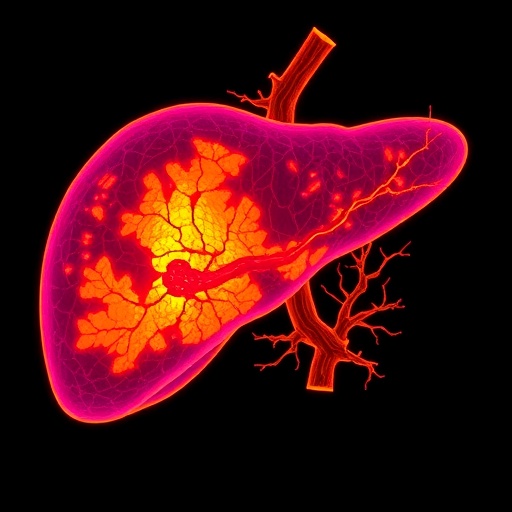
A groundbreaking advance in cancer immunotherapy has emerged from a collaborative effort between researchers at the German Cancer Research Center (DKFZ) and the SILVACX project group at Heidelberg University. The team has developed a novel therapeutic vaccination strategy that harnesses the bodyâs immune system to selectively target and eliminate cancer cells infected with human papillomavirus (HPV). Central to this innovation is the use of silica nanoparticles conjugated with viral peptides, which effectively stimulate T cell responses capable of eradicating HPV-driven tumors in preclinical models.
Human papillomaviruses are a well-known etiologic factor responsible for cervical cancer, as well as a significant contributor to other malignancies including head and neck cancers. While prophylactic HPV vaccines have proven effective at preventing new infections and subsequently reducing cancer incidence, there remains an unmet medical need for vaccines that can treat already established pre-cancerous lesions or tumors. Conventional approaches have struggled to elicit robust immune responses capable of clearing these persistent viral infections within transformed cells.
Addressing this challenge, Angelika Riemer and her interdisciplinary team at DKFZ and Heidelberg University engineered a vaccine platform rooted in the unique properties of silica nanoparticlesâmicroscopic particles composed of silicon dioxide known for their stability and biocompatibility. These nanoparticles were meticulously coated to ensure compatibility with biological tissues and then loaded with carefully selected short peptide fragments derived from viral oncoproteins expressed only in HPV-infected cancer cells. The chosen epitopes are recognized for their ability to activate the human immune system, thus directing cytotoxic T cells against malignant targets.
Upon administration, the vaccine particles are taken up by specialized immune cells called antigen-presenting cells (APCs). These APCs process and display the viral peptide epitopes on their surface via major histocompatibility complex (MHC) molecules, a critical step in initiating an adaptive immune response. This presentation primes cytotoxic CD8+ T cells, equipping them to recognize and destroy tumor cells expressing the HPV-derived antigens. An additional adjuvant was incorporated into the formulation to further potentiate the immune activation and improve therapeutic efficacy.
Crucially, the researchers employed a sophisticated mouse model featuring âhumanizedâ immune systems capable of presenting HPV epitopes in the context of human MHC molecules. This allows for more accurate modeling of human immune responses and better prediction of clinical outcomes. In these experiments, vaccination triggered robust activation and proliferation of cytotoxic T cells against HPV-infected tumor cells. Remarkably, treated mice exhibited marked tumor regression, with some experiencing complete eradication of established HPV-positive tumors and prolonged survival.
The versatility of the silica nanoparticle platform stands out as a key advantage of this therapeutic approach. The nanoparticles not only protect embedded peptide epitopes from enzymatic degradation and premature clearance but also ensure efficient delivery to and uptake by immune cells. Their inherent stability and scalable manufacturing process overcome some of the logistical hurdles faced by other vaccine platforms, particularly in regions lacking cold-chain infrastructure. This aspect positions the vaccine as a promising candidate for wide global deployment, including in low-resource settings where cervical cancer burden is often highest.
Furthermore, the modular nature of the nanoparticle system allows for the incorporation of different viral peptides or antigens, making it adaptable for vaccines against diverse HPV strains or even other infectious diseases and tumor types. This flexibility underscores the platformâs potential beyond the immediate application to HPV-associated cancers and suggests a new frontier in personalized and precision immunotherapies.
The promising preclinical outcomes reported by this team pave the way for further development and eventual clinical trials to evaluate safety, immunogenicity, and therapeutic efficacy in human patients. Should these investigations succeed, this vaccination strategy could revolutionize treatment paradigms not only for HPV-induced cancers but also for a broader range of malignancies where viral or tumor-specific antigens play a pivotal role.
Beyond its therapeutic potential, this research exemplifies the convergence of nanotechnology and immunologyâfields that continue to redefine the possibilities of medicine. The ability to harness nanoscale materials for precise immune modulation heralds a new era in vaccine design, one that may overcome longstanding challenges in oncology and infectious diseases.
According to Angelika Riemer, the lead investigator, the encouraging data validate the decision to refine and expand this nanoparticle vaccine platform. Future iterations may incorporate additional adjuvants or targeting ligands to further enhance immune responses. Moreover, the ease of storage and administration favors the adaptation of this technology for broader, real-world applications, potentially transforming global health outcomes.
As the scientific community awaits further results, this innovative approach highlights the necessity of interdisciplinary collaborations in pushing the boundaries of cancer therapy. The integration of material science, immunology, and oncology embodied by the DKFZ and Heidelberg University researchers sets a compelling precedent for the future of therapeutic vaccines.
Ultimately, this silica nanoparticle-based vaccine represents a promising leap forward in the fight against HPV-related malignancies, a significant public health challenge worldwide. Its success could lay the foundation for a new class of immunotherapies that are not only effective but also accessible, stable, and versatileâqualities essential for impacting cancer survival on a global scale.
Subject of Research: Therapeutic nanoparticle-based vaccination targeting HPV-associated cancers through T cell activation
Article Title: A versatile silica nanoparticle platform for induction of T cell responses â applied for therapeutic vaccination against HPV16 E6/E7-positive tumors in MHC-humanized mice
News Publication Date: 2025
Web References: http://dx.doi.org/10.1080/2162402X.2025.2548002
References:
Sebastian Kruse, Lia T. Fricke, Samantha Zottnick, Ann-Katrin Schlosser, Agnieszka K. Grabowska, Eva Feidt, Philipp Uhl, Ellen Junglas, Jonas D. Förster, Josephine Blersch, Philip Denner, Manina Günter, Stella E. Autenrieth, Eugenio Fava, Walter Mier, Armin Kübelbeck, and Angelika B. Riemer. A versatile silica nanoparticle platform for induction of T cell responses â applied for therapeutic vaccination against HPV16 E6/E7-positive tumors in MHC-humanized mice, Oncoimmunology, 2025.
Keywords: Life sciences, Immunology, HPV, Therapeutic vaccine, Silica nanoparticles, Cancer immunotherapy, T cell activation, Nanotechnology, Viral oncology, Cytotoxic T cells, Vaccine stability, MHC-humanized mice
Tags: biocompatibility of nanoparticlescancer vaccine development strategiescervical cancer immunotherapyHPV vaccine innovationsHPV-related tumor treatmentimmune system cancer therapynanoparticles in cancer immunotherapypreclinical models for cancer researchsilica nanoparticles in medicineT cell response stimulationtherapeutic vaccines for HPVviral peptide conjugation




